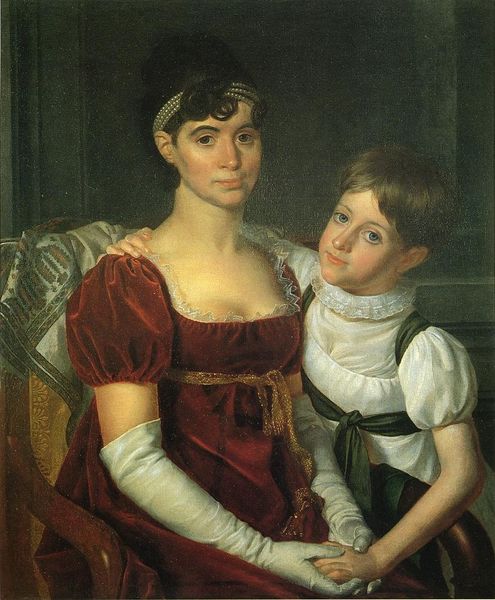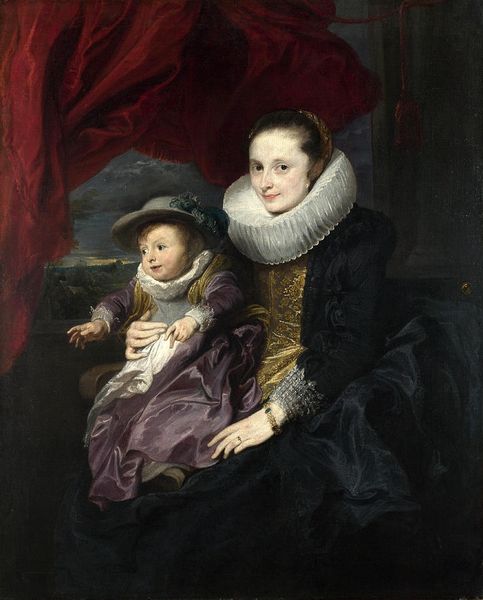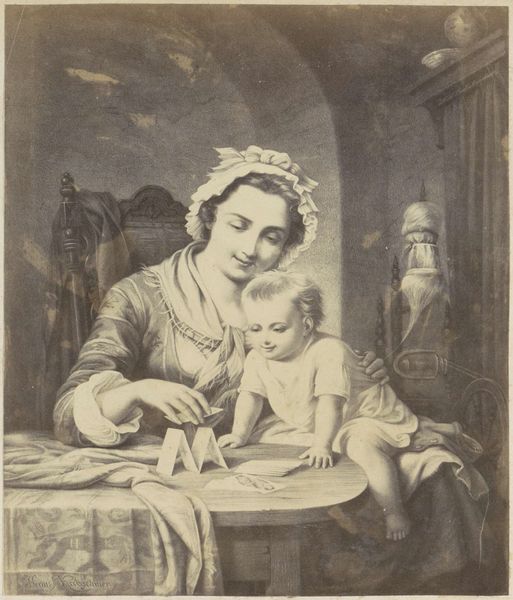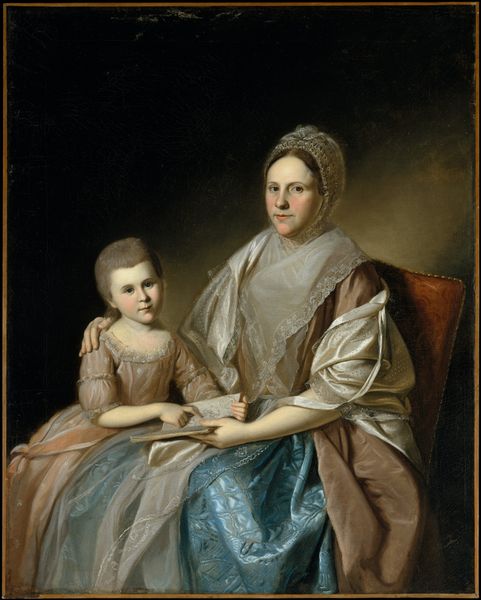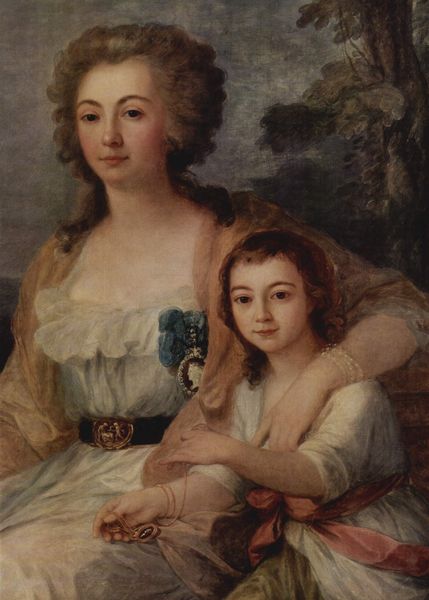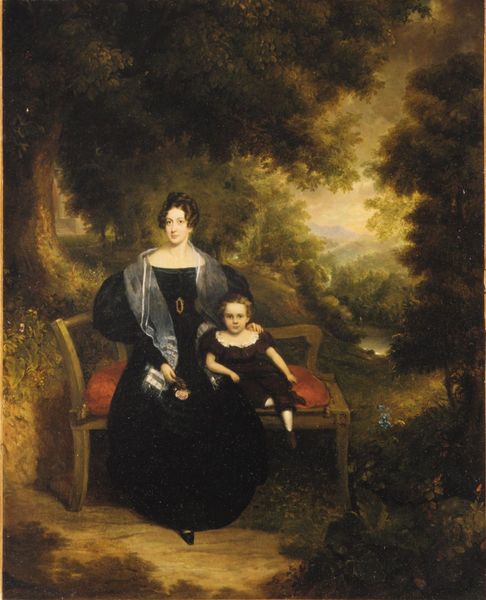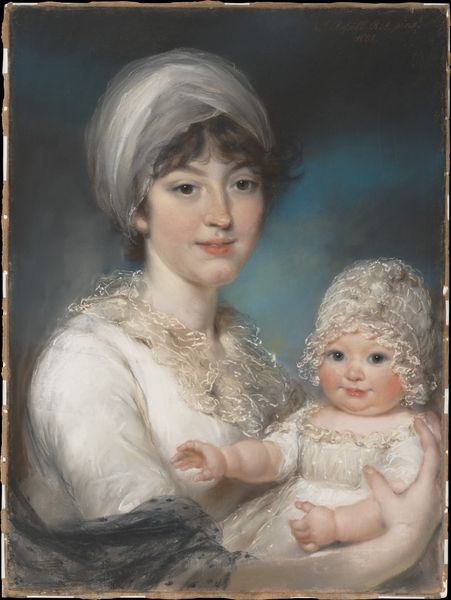
Dubbelportret van een vrouw, waarschijnlijk Johanna Gesiena van Demmeltraadt (1804-1878), echtgenote van Jan Hendrik Carp (1788-1845) en haar zoon Clemens Johan (1834-1889) of dochter Anna Johanna (1842-1901) 1835 - 1843
0:00
0:00
louismoritz
Rijksmuseum
painting, oil-paint
#
portrait
#
painting
#
oil-paint
#
romanticism
#
genre-painting
Dimensions: height 102 cm, width 80.6 cm, thickness 3.7 cm, depth 11.2 cm
Copyright: Rijks Museum: Open Domain
Louis Moritz painted this double portrait of a woman, likely Johanna Gesiena van Demmeltraadt, and her child. The painting reveals a tender, maternal image, but look closer at the child’s doll. It's a poignant symbol, not merely a plaything. The doll as an effigy dates back to ancient rituals, embodying spirits or serving as symbolic stand-ins. We see such figures throughout history, from Egyptian funerary dolls to the medieval practice of using dolls in sympathetic magic. Consider how the doll’s presence here mirrors the child's own representation—an echo of humanity, rendered smaller and, perhaps, more vulnerable. The doll has a similar function to the 'imago', used in ancient Roman funerary processions. The presence of the doll engages our subconscious. It speaks to our collective memory of childhood, protection, and perhaps, the anxiety of mortality. This seemingly simple object evokes a powerful emotional response, connecting us to the past and tapping into universal human experiences.
Comments
No comments
Be the first to comment and join the conversation on the ultimate creative platform.


